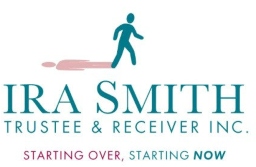Let me tell you: if I had a dollar for every time I tripped up, I’d have more than a few bruised knees—and some surprising lessons, too. There was the time I flubbed a big work pitch, and wound up crafting an even stronger idea the next day. Or that science class disaster that turned into a weekend-long curiosity binge. What if our flops are secret invitations to innovate? Let’s rethink failure (and maybe even start rooting for it now and then).
The Hidden Costs of Fearing Failure
Let’s talk about what really happens when you start seeing every setback as a defeat. It’s not just about feeling bad for a day or two. The emotional impact of failure—especially when it comes to something big like bankruptcy—can run deep. You might start questioning your self-worth, replaying every mistake in your head, and wondering if you’re just not cut out for success. That’s not just your imagination; research shows that labeling failures as personal defeats chips away at your confidence and makes you less likely to try again.
Here’s the thing: when you fear failure, you don’t just avoid risk—you start avoiding opportunities altogether. Maybe you pass on a new project at work, or you stop sharing ideas in meetings. Maybe you even give up on your passion projects. I know I did. There was a year I stopped writing completely after a harsh round of criticism. I took the feedback as proof I wasn’t good enough, not as a chance to get better. Years later, I realized that feedback was gold—if only I’d had the resilience and adaptability to see it that way.
But it’s not just about you. In organizations, this fear of failure can be even more toxic. There’s something called a “guilt culture,” where every mistake gets pinned on a single person. According to a Harvard Business School study, only 2-5% of failures are actually due to individual human error, yet 70-90% of the time, someone gets singled out and blamed. The result? People hide their mistakes, learning stalls, and creativity dries up. No one wants to be the scapegoat, so no one takes risks or admits when something goes wrong.
Self-criticism is another hidden cost. When you’re constantly beating yourself up for not being perfect, you start believing you can’t improve. That’s a fast track to giving up. Instead of developing resilience and adaptability, you get stuck in a loop of anxiety and avoidance. You surrender too easily, and your personal growth hits a wall.
But what if we flipped the script? In the world of air travel, for example, every error—no matter how small—is reported and analyzed, not to punish, but to learn. That’s why flying is so safe: just one accident per 8.3 million departures, according to the International Air Transport Association. When failure is seen as a chance to grow, not a reason to shame, everyone gets better.
Angela Duckworth, who’s studied what really drives long-term success, puts it simply:
Grit, not just talent, is the long game of success.It’s perseverance, not perfection, that matters. Creating a culture embracing failure—whether in your own life or at work—opens the door to innovation, creativity, and real progress. The emotional impact of failure is real, but so is the power of learning from it. When you stop fearing failure, you start growing for real.
Why Airplane Errors Make Flying Safer (and What We Can Steal From Pilots)
Imagine if every mistake you made at work was not only admitted, but shared openly with your entire industry. Sounds terrifying, right? But in aviation, this radical transparency is exactly what keeps flying so safe—and it’s a masterclass in learning from mistakes that the rest of us can borrow from.
Here’s how it works: every pilot, whether in the Air Force or on a commercial airline, is required to report any error—big or small—within days of it happening. Not just disasters, but near-misses, slip-ups, and even the “almost” moments. The catch? If you come forward and log your mistake, you’re granted immunity from punishment. The focus shifts from blame to learning. As Dr. Kyle Muller puts it:
Mistakes become valuable lessons when we share them.
This systematized error analysis means every confession becomes a lesson, not just for the individual, but for the entire industry. Airlines pore over these reports, looking for patterns and root causes. They don’t just want to know what went wrong—they want to know why, and how to prevent it next time. This approach has made air travel one of the safest ways to get around, with just 1 accident per 8.3 million departures (International Air Transport Association, 2014). That’s not luck. That’s the benefit of failure—when it’s handled right.
But why does this work so well? First, it creates a culture where mistakes aren’t hidden out of fear. Pilots know that if they admit an error, they won’t be shamed or punished. Instead, their honesty helps set new safety norms and saves lives. Second, it turns every failure into a data point for improvement. Airlines use these insights to tweak procedures, retrain staff, and even redesign cockpits. The lessons ripple out, making the whole system smarter.
It’s not just planes that benefit from this mindset. Research shows that artificial intelligence gets better through similar processes: machine learning, error detection, and feedback loops. AI systems make mistakes, analyze them, and update their models—just like pilots do. This cycle of trial, error, and adjustment is what fuels continuous improvement, whether you’re a computer or a human.
So, what can you steal from pilots for your own personal growth? Start by embracing your errors as opportunities, not evidence of inadequacy. Create your own “immunity” by being honest with yourself and others—log your mistakes, analyze them, and share what you’ve learned. Don’t let a culture of blame or fear stop you from growing. As studies indicate, the real fast track to improvement is paved with the lessons of failure, not the illusion of perfection.
- Be radically transparent: Share your mistakes, not just your wins.
- Focus on learning, not blame: Treat every error as a chance to get better.
- Systematize your growth: Analyze patterns in your failures and adjust your approach.
In the end, the sky’s not the limit—it’s just the beginning, if you’re willing to learn from every bump along the way.
AI’s Secret Superpower: Embracing Mistakes and Getting Smarter
Let’s be honest: nobody likes making mistakes. But what if I told you that artificial intelligence (AI) is actually built to fail—and that’s exactly what makes it so powerful? AI learning from mistakes isn’t just a technical feature; it’s the real engine behind smarter, more adaptable machines. In fact, the way AI handles errors can teach us a thing or two about growth, resilience, and even bouncing back from life’s “epic fails.”
Think about how you learned to ride a bike or master a board game. You probably fell, lost, or messed up more times than you can count. But each mistake gave you feedback. You adjusted, tried again, and—eventually—got better. AI works the same way. Through machine learning algorithms and reinforcement learning techniques, AI systems are designed to try, fail, analyze, and improve. Every error is a lesson, every correction a step forward.
At the heart of AI system improvement are feedback loops and error detection and analysis. When an AI makes a wrong prediction or takes an incorrect action, it doesn’t just shrug and move on. Instead, it records the mistake, analyzes what went wrong, and updates its model. This process is continuous. The more errors an AI encounters, the more data it gathers, and the smarter it becomes. As Dr. Kyle Muller puts it:
Failure is data—whether you’re coding a robot or coaching a class.
Reinforcement learning techniques take this concept even further. Imagine playing chess against a computer that learns by losing to you. Each defeat isn’t a setback; it’s a chance for the AI to refine its strategy. Correct moves are rewarded, while wrong moves are penalized. Over time, the AI gets better at making decisions, just like you do when you learn from your own losses. Research shows that this trial-and-error approach enables AI to self-correct and adapt, making it more effective with each iteration.
But here’s where it gets really interesting: some machine learning frameworks use “mistake-making AIs” to train “learning AIs.” One AI intentionally makes errors, creating challenging scenarios for another AI to solve. This deliberate error generation accelerates learning, both for machines and, by extension, for us. It’s a bit like a teacher setting up tough problems so students can stretch their thinking and grow.
Now, imagine if schools offered a class called “Epic Fails 101—And How to Bounce Back.” Instead of hiding mistakes, students would analyze them, share insights, and build resilience. In the world of AI, this mindset is already the norm. AI test automation, for example, uses continuous learning to adapt to new situations, reducing errors over time and making systems more robust.
So, the next time you stumble, remember: mistakes aren’t just setbacks—they’re stepping stones. Whether you’re debugging code or navigating life, embracing errors is the real fast track to growth. After all, if AI can get smarter by failing, so can you.
How You Can Build a Failure-Friendly Life (And Actually Look Forward to Messing Up)
Let’s be honest: no one wakes up hoping to fail. But what if you could actually look forward to your next mistake? It sounds wild, but building a failure-friendly life is one of the fastest tracks to personal growth, resilience, and adaptability. The benefits of failure aren’t just theoretical—they’re real, practical, and transformative.
First, let’s acknowledge the emotional punch that failure can deliver. Whether it’s a botched project, a personal setback, or even something as big as bankruptcy, the sting can be sharp. Research shows that failure often chips away at self-esteem, fuels anxiety, and can make you want to avoid new challenges altogether. That’s the trap: when you let fear of failure dictate your choices, you shrink your world and put personal growth on pause.
But here’s the twist—what if you swapped blame for curiosity? Instead of beating yourself up, try asking: “What can I learn from this?” This simple shift is the foundation of a failure-friendly mindset. Reflecting on your errors isn’t about wallowing in regret; it’s about building self-awareness and resilience. In fact, studies indicate that people who embrace their learning curve—messy as it may be—develop stronger coping skills, greater creativity, and a deeper sense of self.
Think about the aviation industry, where every mistake is reported, analyzed, and shared—not to shame, but to teach. This culture of transparency has made flying one of the safest ways to travel. The same principle applies to artificial intelligence: machines learn by making mistakes, analyzing what went wrong, and adjusting their approach. Why shouldn’t we do the same?
Angela Duckworth, renowned for her work on grit and perseverance, reminds us that success is rarely a straight line. It’s a winding, sometimes frustrating path where setbacks are not just possible—they’re essential. If you want to grow, you have to give yourself permission to try wild ideas, stumble, and get back up. Personal growth blooms when you welcome your own learning curve.
So, how do you start? Try this challenge: track a personal slip-up this week. Don’t hide it or gloss over it. Instead, journal about what happened, what you felt, and—most importantly—what you learned. Share it with someone you trust. You might be surprised at how quickly shame turns into insight, and how resilience and adaptability start to feel like second nature.
Real progress is rarely tidy. It’s a messy, twisty climb, full of unexpected detours and hard-won lessons. But each misstep is a step forward—if you let it be. As Dr. Kyle Muller puts it:
There’s no shortcut around mistakes—only paths that let you use them.
So go ahead—mess up. Learn. Grow. And watch as your life becomes not just failure-friendly, but brilliantly resilient.



